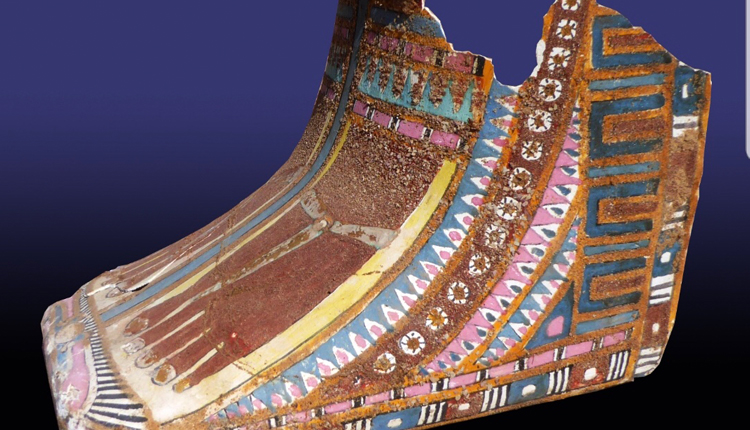Mostafa Waziri of Egypt’s Supreme Council of Antiquities announced the discovery of a sealed, rock-cut tomb in Aswan containing about 30 mummies, according to an Ahram Online report.
The tomb is located in the Aga Khan Mausoleum area, where archaeologists have mapped some 300 tombs dating from the sixth century B.C. through the fourth century A.D. The newly discovered tomb dates to the Greco-Roman period and is made up of a stairway flanked by sculpted blocks of stone leading to funerary chambers.
Patrizia Piacentini, head of the Italian-Egyptian archaeological mission, and her team members recovered pieces of two painted wood coffins, one of which was inscribed with the name of its occupant, and an invocation of the local gods Khnum, Satet, Anuket, and Hapy.
“Leaning against the north wall of the room was an amazing intact stretcher made of palm wood and linen strips, used by the people who deposited the mummies in the tomb,” Piacentini said.
Unpainted white cartonnage, bitumen for mummification, and a lamp were found near the entrance to the main room, along with fragments of painted funerary masks and a statuette of Ba-bird, depicted as a bird with a human head, who was thought to represent the soul of the deceased.
Source: Archaeology


